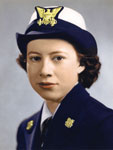In the words of Abraham Lincoln, the Department of Veteran Affairs exists "to care for him who shall have borne the battle and for his widow, and his orphan."
Primarily intended for veterans, the Department of Veteran Affairs does, nonetheless, provide a number of fascinating statistical offerings.
The National Center for Veterans Analysis and Statistics presents demographic data on veteran ethnicity, branch of service, officer or enlisted status, and more within the nation and individual states; veteran data from the 2000 census; Veteran Affairs expenditure data and medical program information; studies on topics such as veteran employability; and special reports covering women, Alaskan, and Native American veterans, among other topics.
Perhaps most immediately relevant to classroom research is a PDF displaying war statistics, from the American Revolution through Desert Shield/Desert Storm. Data includes the total number of servicemembers, battle fatalities, non-mortal wounds, non-battle fatalities, and living veterans per war and in combination. The page also offers a list of the date of death; age; and name of the last remaining veteran, widow, and dependent (if known) of the American Revolution, War of 1812, Indian Wars, Mexican War, Civil War, and Spanish-American War.
The Department of Veteran's Affairs also makes several children's sites available. VA Kids, K-5th provides department information—the motto, history, seal, Veterans Health Administration, technology, research, and Veteran Benefits Administration; veteran facts; the history and display of the U.S. flag; and online games. Games require Flash 6. VA Kids, 6th-12th Grades offers similar materials, designed for a more mature student.
The Teacher's Page (under "Kids' Page") offers a Veterans Day teaching guide, stories of U.S. customs and symbols, and three other suggested resources.
Finally, the site contains a gallery of past Veterans Day posters, useful for examining iconography and changing print design trends and technology.


